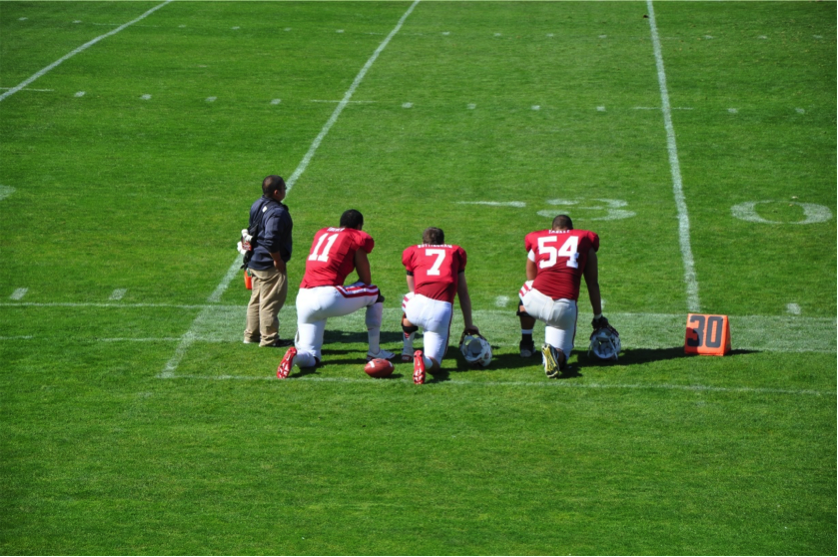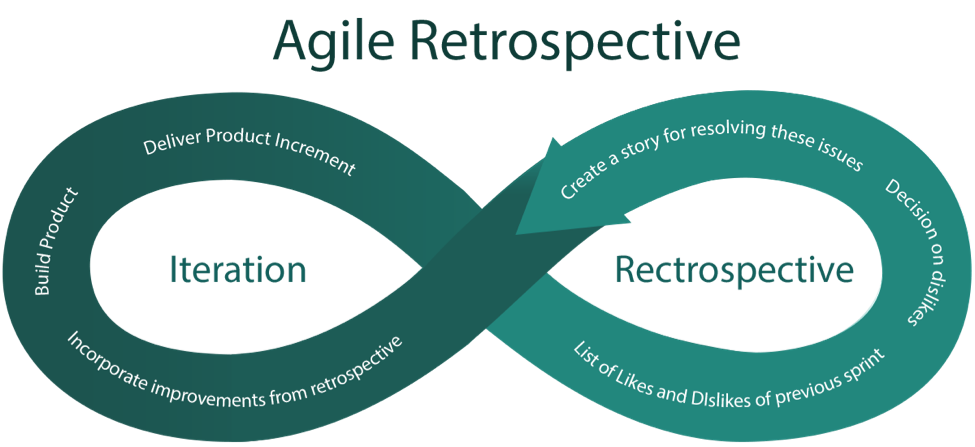1. What is an Agile retrospective? What is its importance in the Agile framework? When should it be done?
Retrospectives are at the core of any successful Agile or Scrum environment. The agile manifesto states that a “team reflects on how to become more effective”. Following this tenant, an Agile retrospective is a practice used by teams to take a look back at their work practices, and continuously find ways to improve these work practices.
1. So why is the retrospective so important?
The Agile retrospective is a unique opportunity for the team to evaluate and improve its process. It is a time-boxed meeting headed by the Scrum Master which aims to evaluate a recently ended sprint. Its aim is to find out the factors which can make the next sprint more productive and/or more enjoyable.
It is a method of learning through your mistakes. For this reason it is a very practical and hands on approach to improving your team’s process. You can also use agile retrospective tool to help you manage the process.
Sometimes teams will skip the retrospective. This is unfortunate because it is a great opportunity for the team to discover its weaknesses and to make changes to continually improve the way in which the team functions. We will discuss later why some teams choose to forgo this practice and what can be done to ensure that it is not ignored.
2. When should the retrospective be done?
The optimal time for doing agile retrospective is somewhere in the middle ground between not too far away from nor too close to the end of a sprint. This is so because at this time the problems encountered by the team in the previous sprint are still fresh in the team’s heads. This will ensure that these issues are brought up in the agile retrospective meeting.
Christopher Avery has written that a retrospective meeting functions to provide “Closure: it’s difficult to start something new when something else remains mentally or emotionally unclosed”. Therefore to go ahead with a new sprint, the last sprint must be closed entirely, and agile retrospective is the perfect way to do this.
One of the benefits of retrospectives is team empowerment. Since the team is empowered, there will be little resistance to the changes that are put forward in an agile retrospective.
Another benefit of agile retrospectives is that it is completely in-house. The changes are put forward by team members, and put into effect by team members. It is therefore much more effective, cheaper and faster!
Finally, agile retrospectives serve to strengthen the bonds between team members. The collective experience of working on two or more sprints together as a team can be equated to that of having undertaken a journey together.
3. The Dont’s of Agile Retrospective
- Don’t play the blame game. This type of meeting may have a tendency to devolve into a bout between the members where people blame others for problems that might have occurred during the sprint. Members should adopt a positive attitude at all times and avoid doing this. The goal is to get better, together.
- Don’t let the findings of the retrospective meeting go to waste. Another reason why this practice may be taken up only to be abandoned later is the lack of action taken to put the meetings findings into action. Whichever problem is discovered in the meeting, should be addressed, and results should be noted in the next meeting.
- Don’t let things get boring or monotonous. Another trap that is easy to fall into while doing agile retrospectives is that the team finds the whole practice very boring and monotonous. This can be prevented in various ways. For example, you can choose to host the retrospective meeting outdoors in a more casual environment, such as the park.
4. The Do’s of Agile Retrospective
- Do motivate the team to participate. There is no use to this activity if the team does not actively participate. For breaking the ice for new team members or team members that are new to agile, certain games can be devised to make this a more enjoyable experience.
- Do plan the agile retrospective. You can choose to agree with the team beforehand on the agenda of the retrospective meeting. This can be done as issues come up during iterations. This will leave you with more time in the meeting to focus on discussion and problem solving.
- Do make the agile retrospective a safe place to express issues. Your team should be completely comfortable in expressing their issues or concerns. Nothing should be left behind due to hesitation to speak up.
- Apply different feedback techniques. Using different feedback techniques can keep things interesting for yourself and your team. This also ensures higher motivation to provide feedback and increased brainstorming capabilities. Examples of such techniques are Silent Collaboration, JargonBust, The bicycle, etc.
For a detailed list of such techniques, go here: http://tastycupcakes.org/category/games/ - Prioritize agenda items. You should prioritize agenda items that have already been set before the meeting. This will result in saved time and effort being diverted into the right channels.
2. Conclusion
In conclusion, agile retrospective is a powerful and useful tool for any team that is looking to increase efficiency and adopt a model of continuous improvement. However, in order to be fully effective it is required that retrospectives are done properly. The methods listed in this article may not work for everyone, so therefore teams should experiment with the idea and see what works for them best.



